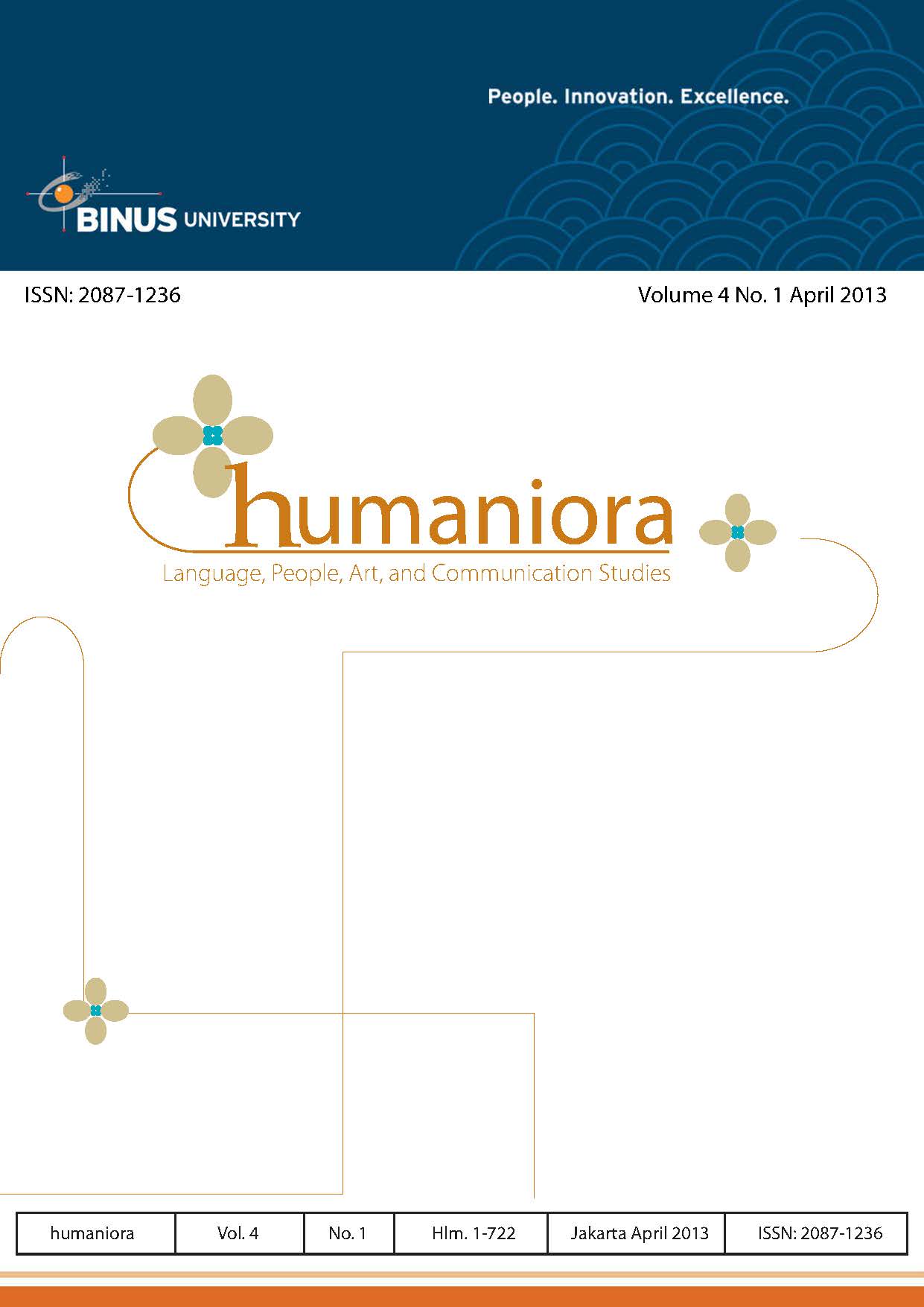A Brief Analysis on Vocabulary Learning Strategies in Second Language
DOI:
https://doi.org/10.21512/humaniora.v4i1.3412Keywords:
Vocabular, L2, Learning environment, Cultural background, Proficiency levelAbstract
This article tries to explore the usage of vocabulary learning strategies in second language learning on students with different background. It attempts to elicit useful ideas and gives a practical guidance in learning Chinese as a second language. This work explains how learning environment, cultural background and proficiency level can highly affect the choice of learning strategies. And even though students are learning different languages, there are similarities in their choice of strategies during the process of acquiring the target language.
Â
  Â
References
å¾å亮.对外汉è¯å¦ä¹ ç†è®ºç ”究二åå¹´[J].《世界汉 è¯æ•™å¦ã€‹ï¼Œ2004(4).
å´å‹‡æ¯….å¦ä¹ ç–略对汉è¯ä½œä¸ºç¬¬äºŒè¯è¨€å¦ä¹ 者的影å“[M].对外汉è¯æ•™å¦çš„跨文化视角,上海:åŽä¸œå¸ˆèŒƒå¤§å¦å‡ºç‰ˆç¤¾ï¼Œ2004.
Chamot A.U. (1987). The learning strategies of ESL students. InA.Wenden&J.Rubin (Eds.). Learning strategies in language learning . PrentieeHall.
Cohen, A. D. (2000). Strategies in Learning and Using a Second Language. 北京:外è¯æ•™å¦ ä¸Žç ”ç©¶å‡ºç‰ˆç¤¾.
Coady, J., & Huckin, T. (2001). Second Language Vocabulary Acquisition. [M]上海:上海外 è¯æ•™è‚²å‡ºç‰ˆç¤¾.
Downloads
Published
How to Cite
Issue
Section
License
Authors who publish with this journal agree to the following terms:
a. Authors retain copyright and grant the journal right of first publication with the work simultaneously licensed under a Creative Commons Attribution License - Share Alike that allows others to share the work with an acknowledgment of the work's authorship and initial publication in this journal.
b. Authors are able to enter into separate, additional contractual arrangements for the non-exclusive distribution of the journal's published version of the work (e.g., post it to an institutional repository or publish it in a book), with an acknowledgment of its initial publication in this journal.
c. Authors are permitted and encouraged to post their work online (e.g., in institutional repositories or on their website) prior to and during the submission process, as it can lead to productive exchanges, as well as earlier and greater citation of published work.
USER RIGHTS
All articles published Open Access will be immediately and permanently free for everyone to read and download. We are continuously working with our author communities to select the best choice of license options, currently being defined for this journal as follows: Creative Commons Attribution-Share Alike (CC BY-SA)




















